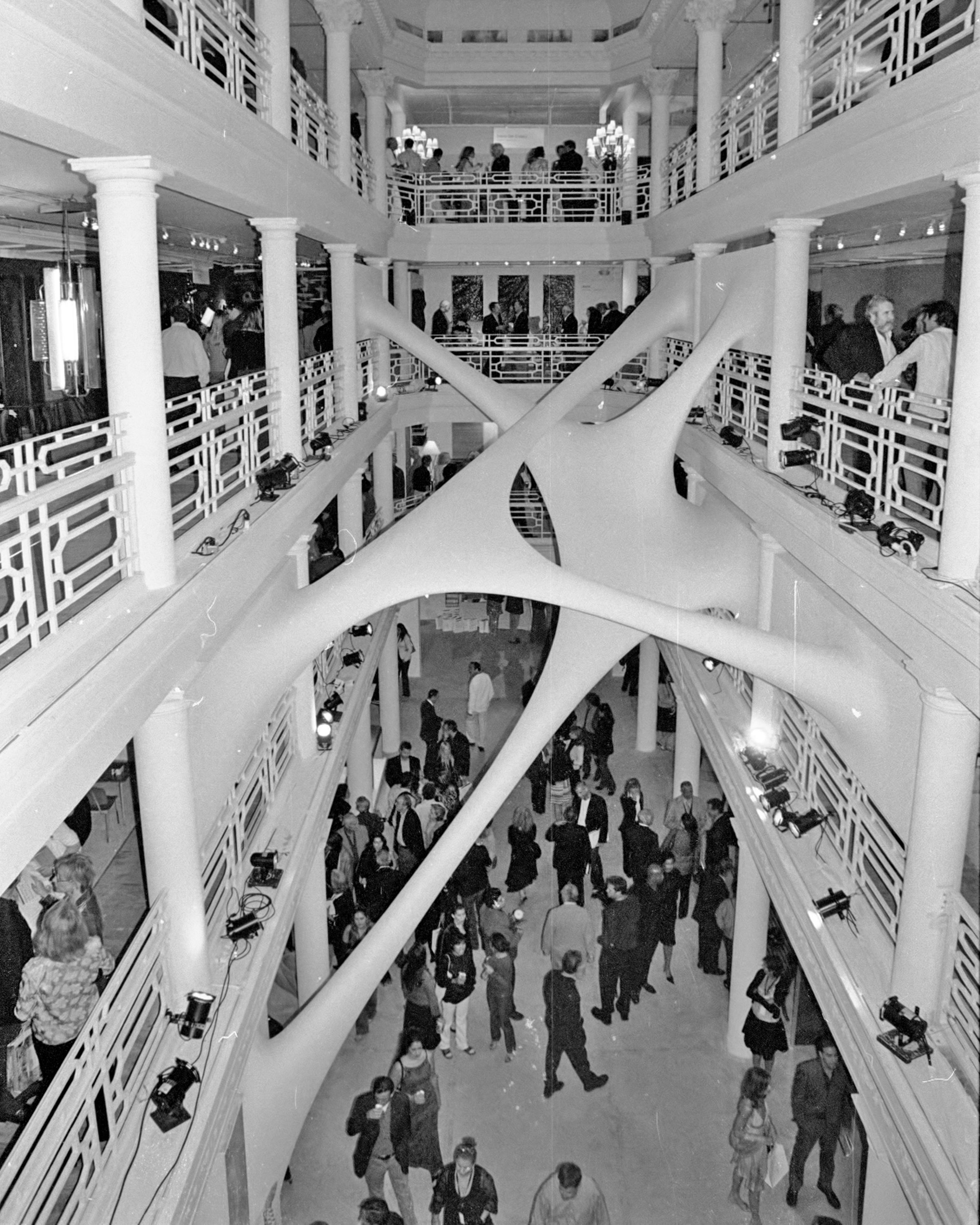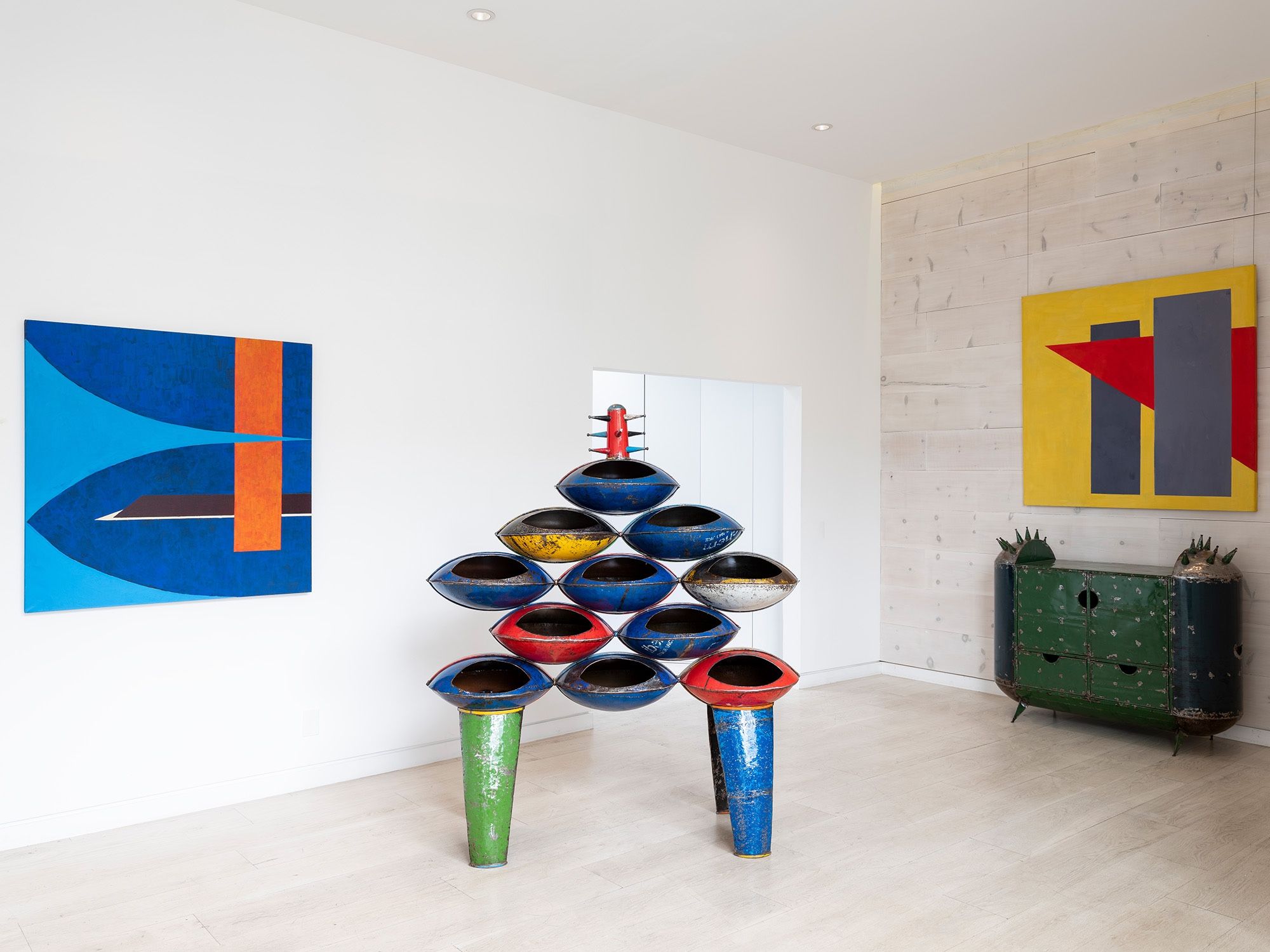IN THE MIX SEPTEMBER 3 2021
by Design Miami
On the eve of a new book and exhibition, we chat with the creative team behind the landmark project exploring birth and motherhood through the lens of design

WOMAN WEARING SARI, BENGALURU (THEN CALLED BANGALORE) INDIA, 2006
Image by and courtesy of Philippe McLean. Image featured in the new book, Designing Motherhood
This month, Designing Motherhood—a landmark project exploring the world of human reproduction through the lens of design—launches its latest iterations: a new book, published by MIT Press, and an exhibition at Philadelphia’s Center for Architecture and Design. Through critical examination of over 70 designs from the past 50 years—from breast pumps to at-home pregnancy tests, maternity fashion, and more—the multipart project explores, with empathy and savvy, the human experience of designs connected to pregnancy, birth, postpartum, and beyond. It is a fresh and important look at, as design critic Alexandra Lange writes in her wonderful foreword to the book, “a field hiding in plain sight, obscured by its own ubiquity and sidelined by everyday sexism.”
Designing Motherhood began as a shared passion project of design historians Amber Winick and Michelle Millar Fisher, both of whom recognized that the topic of human reproduction had yet to be properly considered within the broader design community. Years in the making, it’s since grown to include an impressive list of individual and institutional collaborators—including the Pew Center for Arts & Heritage, Maternity Care Coalition, and others—and birthed a popular Instagram account, design curriculum, public programming, book, and a pair of overlapping exhibitions, the first of which launched this past May at the Mütter Museum in Philadelphia. As Winick tells us: “This project has had a long gestation, and it’s been a true labor of love.”
On the eve of its latest debuts, we sat down with the team behind Designing Motherhood to learn more about the project in their own words.
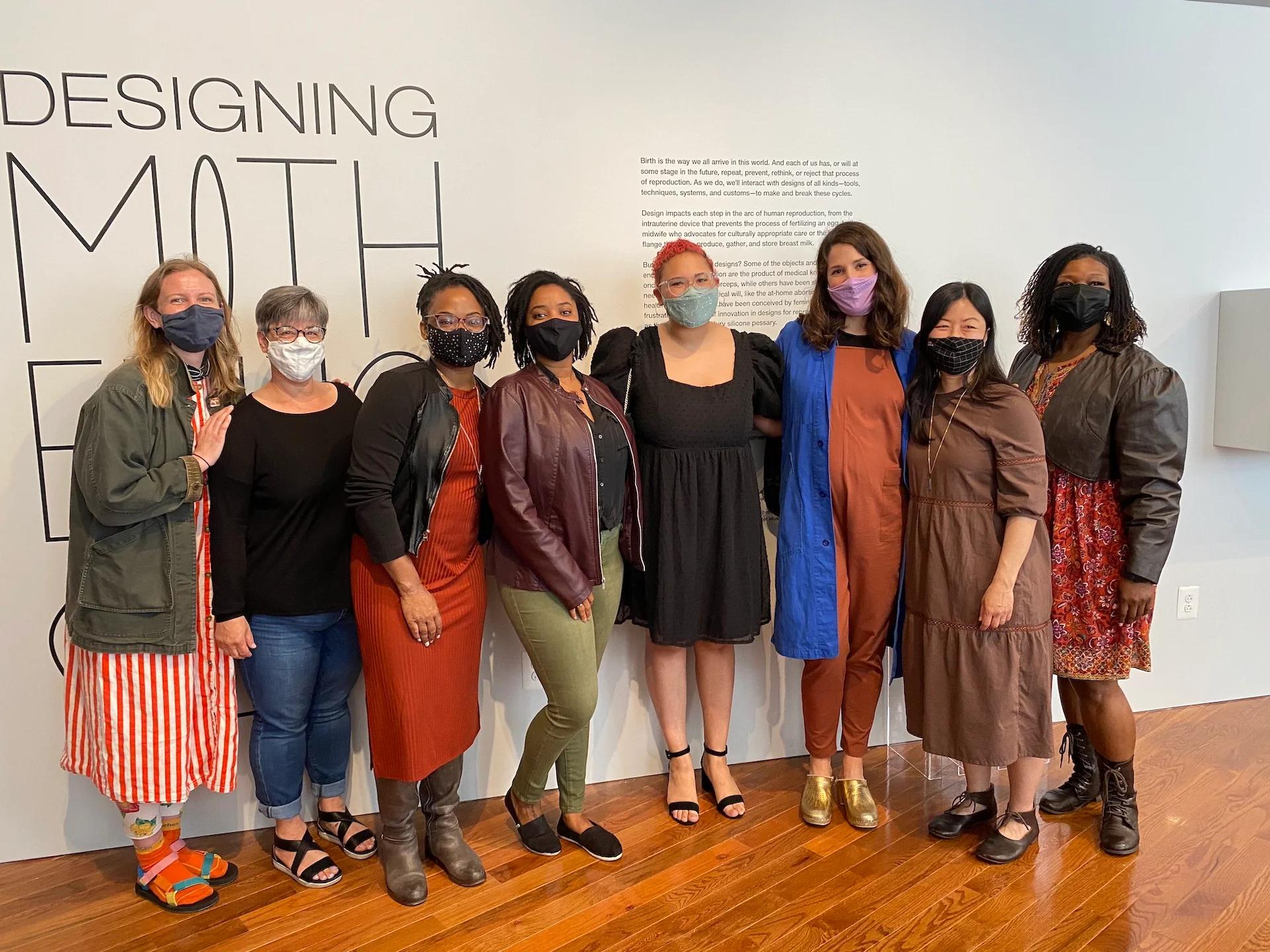
PART OF THE DESIGNING MOTHERHOOD TEAM ON LOCATION AT MÜTTER MUSEUM
Photo courtesy of Designing Motherhood
Design Miami/ What was the specific inspiration and impetus behind the Designing Motherhood project? How and when was it born?
Amber Winick/ Michelle and I are both design historians, and when we met in 2015, we quickly discovered a common research interest in the design for the arc of reproduction. Unfortunately, though the topic excited us, objects like menstrual products, maternity fashion, and breast pumps weren’t exactly welcome in the institutions where we worked, trained, and venerated. So we decided to go rogue and do the project on our own.
By 2017, we had our first iteration of a book proposal. But though we were sure our idea was gold, and had an extremely wide audience (after all, everyone shares the universal experience of having been born), we were met with a steady stream of rejections. We continued our research, sharing ideas with each other on what we affectionately called “our public research channel,” @designingmotherhood on Instagram.
In 2019, we partnered with Maternity Care Coalition, a 40-year-old organization dedicated to improving the health and well-being of pregnant women and parenting families, and enhancing school readiness for children 0-3. Together, we applied for a Pew grant, got it, and MIT Press signed on as the book’s publisher. Along the way we gathered the design historian Dr. Juliana Barton, artist and curatorial assistant Zoë Greggs, and urban planner and policy expert Gabriella Nelson, each of whom has contributed to the project in incredible and innumerable ways. This project has had a long gestation, and it’s been a true labor of love.
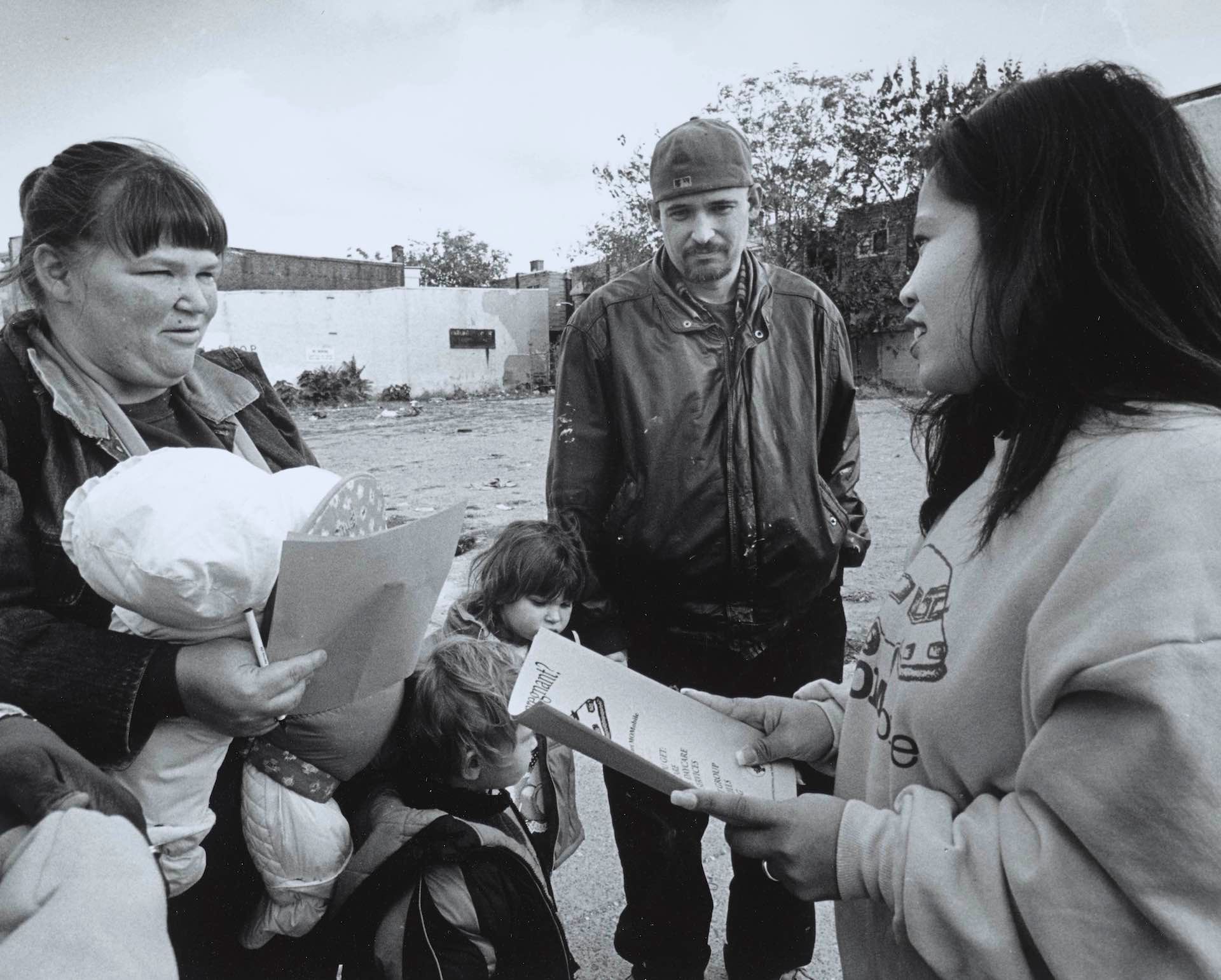
MATERNITY CARE COALITION STAFF SERVING CLIENT IN PHILADELPHIA, 1980S
Photo by Jerry Millevoi; courtesy of MCC and the University of Pennsylvania Library Archives
Design Miami/What do you most hope people take away from the new exhibition and book—and the project as a whole?
Michelle Millar Fisher/Michelle Millar Fisher: We hope people understand that this isn’t a new history, but one that many people have been working on for a really long time before us, and that it is worth highlighting more often in cultural institutions and other public spaces, in order to acknowledge all of the hard work that has been done by Reproductive Justice advocates, women and non-binary people, and especially women of color. This acknowledgment of the scholarship and activism on whose shoulders we stand is long overdue. We also hope our work inspires new generations of design thinkers to pick up the baton. And finally, we hope that we inspire readers of all stripes by making sure that they feel empowered about this area of design or can identify through their own experiences with the things that we describe in the book and in the exhibitions.
DM/What has surprised you most? And what are the biggest lessons you're taking away from the project?
AW/When we began the project, we wanted to treat design expansively, and we’ve definitely stayed true to that goal! We see design as spanning intersections and geographies, and integral to shaping human experience. We include works of design like Isamu Noguchi’s 1937 design for the Radio Nurse, which was the very first baby monitor, Meg Crane’s 1970 prototype for the at-home pregnancy test, and clear Cesarean curtains, for example. But we also include more abstract designs, such as gendered language included on birth certificates, postpartum practices, and even objects that individuals create their own meanings around, such as miscarriage tattooos, or the photos a family receives just prior to adopting a child.
Due to the nature of our “research in public” Instagram, we’ve seen how treating design expansively in this way has led to a real sense of connection and ownership over the objects and systems that shape people’s bodies, relationships, and experiences. These designs belong to us all, and if we really scrutinize their histories, and open them for dialog, we can better see what serves us, what holds us back, and what’s in dire need of redesign.
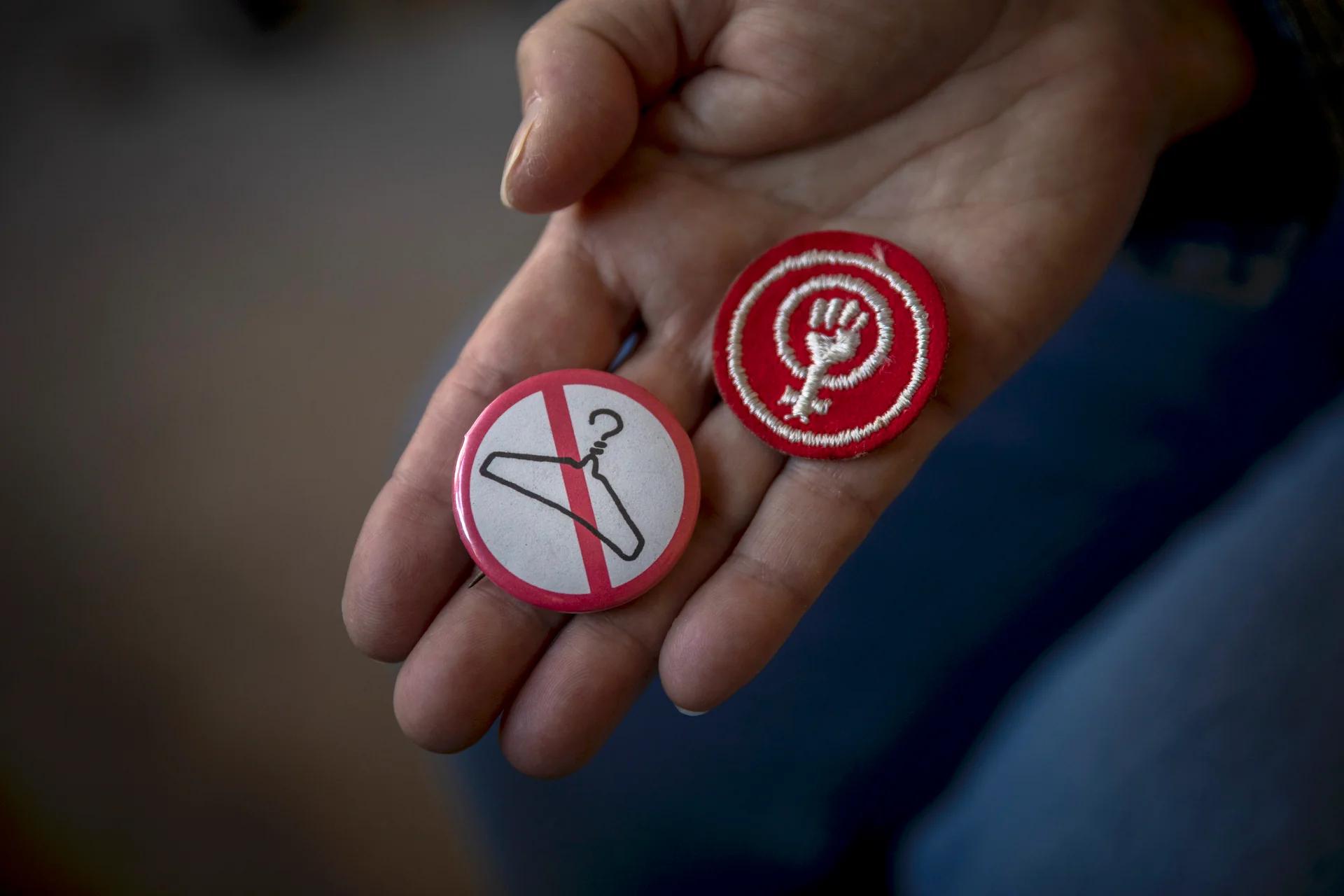
RETIRED ATLANTA-BASED SOCIAL WORKER SHARON WOOD HOLDING A PRO-CHOICE PIN AND PATCH WHICH SHE LAST WORE IN 1973
Photo courtesy of Audra Melton
DM/What have been the biggest obstacles in pursuing this project?
MMF/Mostly just having to build it from the ground up, rather than being able to have it as part of our day jobs. We were so fortunate to partner with Maternity Care Coalition, a group who have been doing this work for decades. But it took quite a while to get museums, publishers, and media to take the project seriously enough to put it on their exhibition roster or publish it. It’s turned out to be a really big success, which is wonderful. At the same time it’s frustrating that this had to be a passion project which we’ve largely had to take on during our evenings, weekends, and the wee hours. It deserves more resources, as do so many similar stories which have been told since time immemorial, but just not listened to by those in power.
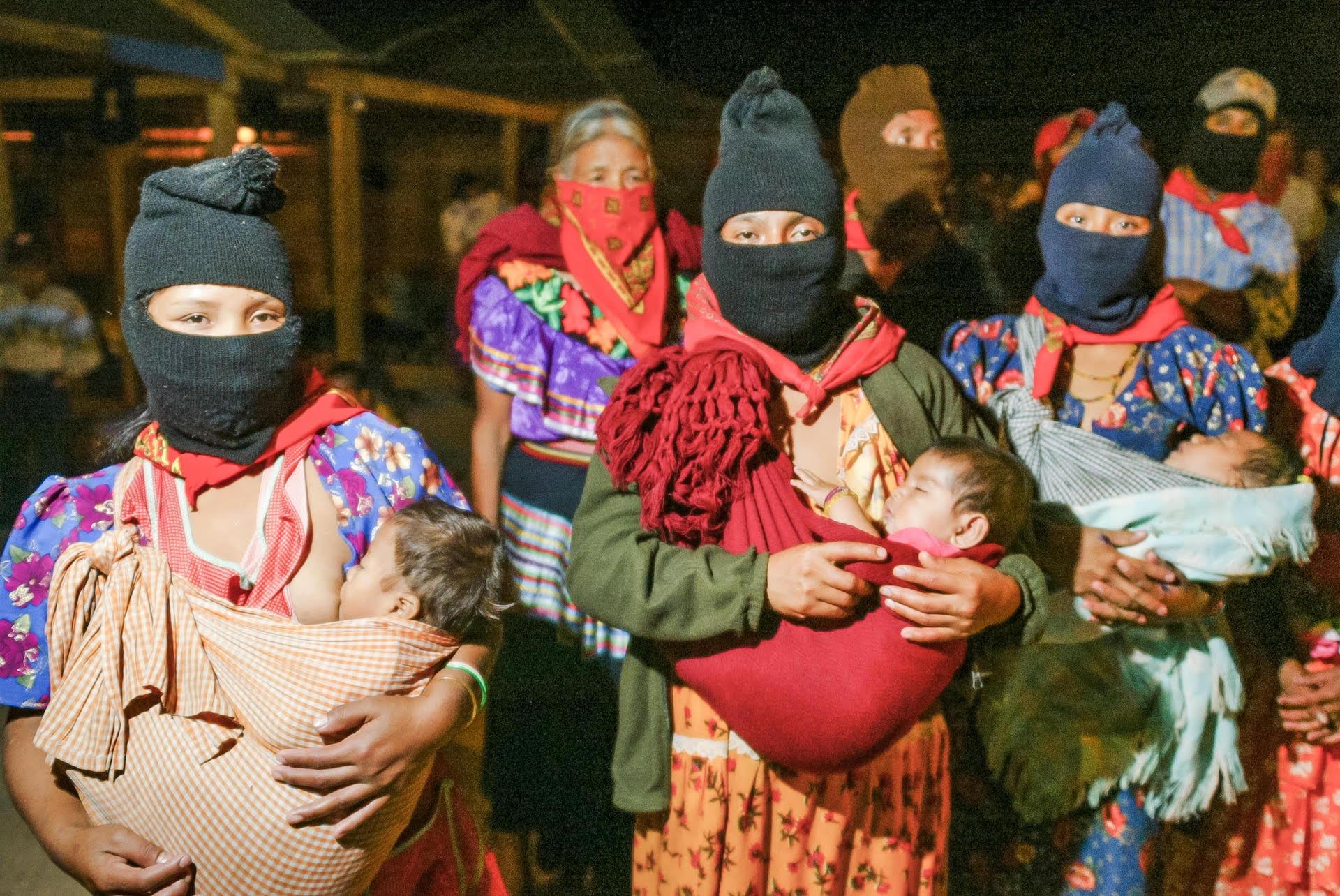
ZAPATISTA MOTHERS BREASTFEEDING, 2006
Photo © Bernardo de Niz
DM/How can good design help address—and/ or correct—the misconceptions, mistreatment, and disparities of motherhood?
MMF/I don’t really think there’s such a thing as good design. Or, if there is, I think we need a new phrase for it because the notion of “good design“ has such a freighted history. Design is only as good as the people around it, including those who create it and those who use it. So good systems design produces people who feel empathetic and empowered to do right for themselves and for each other. One very concrete example of this is rethinking the pelvic exam, which is what the folks at Yona have done, and providers like midwife Stephanie Tillman are doing in their practice. It’s as much about the language and the approach that they use as it is about the redesigned speculum.
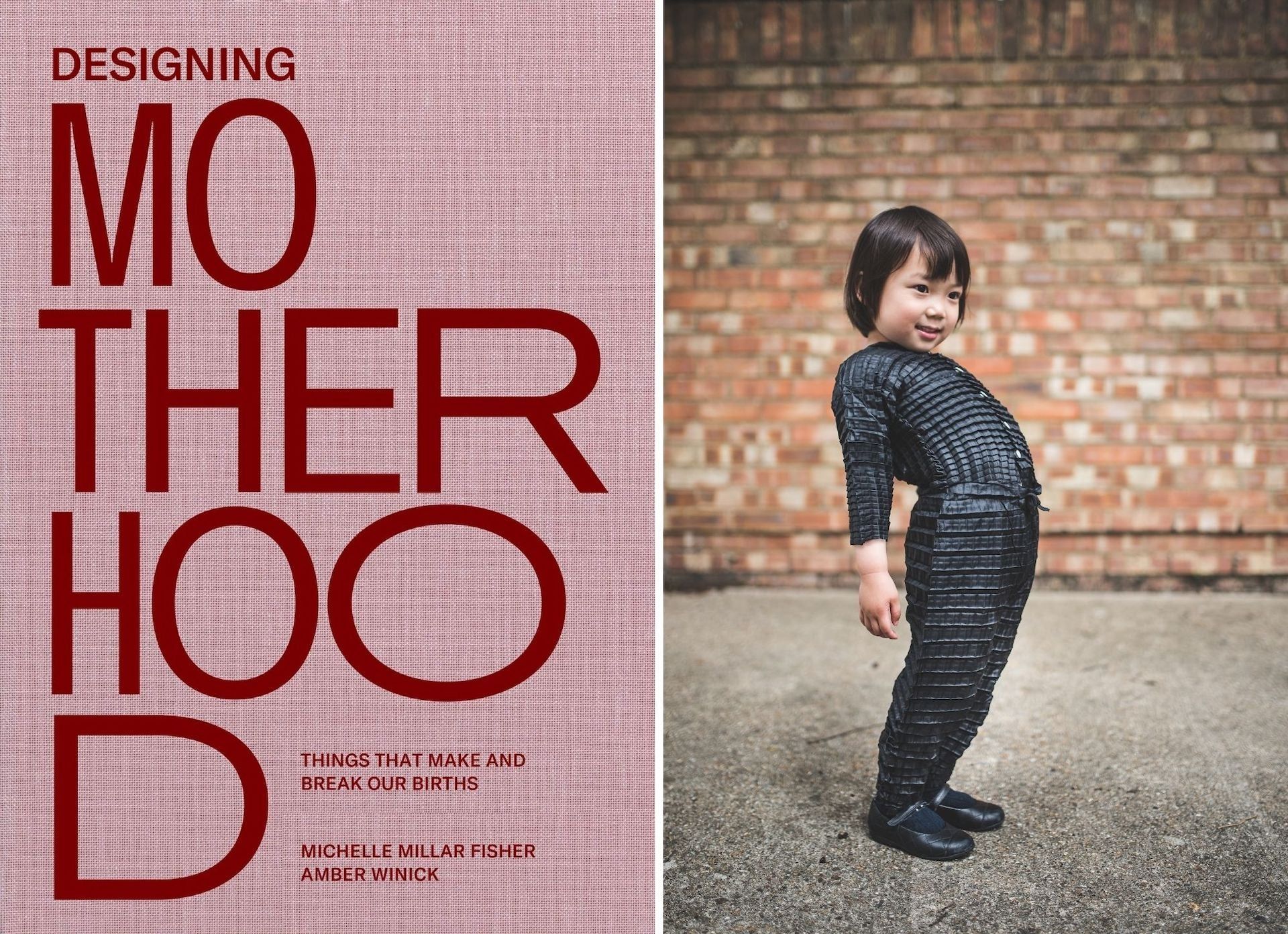
DESIGNING MOTHERHOOD, PUBLISHED BY MIT PRESS, AVAILABLE THIS MONTH. | RYAN MARIO YASIN’S PETIT PLI GARMENTS THAT GROW WITH THEIR YOUNG WEARERS
Photo courtesy of Petit Pli
DM/Can you tell us about a few particular designs in the exhibition that you’re especially excited about?
Zoë Greggs/There are so many! Each object has such a fascinating and multidimensional history. But we do have a few favorites: The first design that comes to mind is the iconic Kuddle Up blanket, created by A.L. Mills in the mid 1950s. This blanket is one of the first objects that a baby born in a hospital will encounter, and because the US has exported not only its model of birth, but also its stuff, that’s true for hospital-born babies across the globe. There is something incredibly mind boggling about a simple cotton blanket connecting folks from a wide range of regions, identities, and cultures. On the other hand, it’s also a sign of the serious impact the multi-billion dollar medical industry has on our lives.
Learning more about methods and design objects related to the arc of human reproduction also led to several conversations with my own mom about her birthing and pregnancy experiences. My mom used the Lamaze method during her labor, and it’s a history we showcase at the Center for Architecture and Design. We’ve all seen the “hee hee hooo” breathing pattern in movies depicting birth, but few of us know that it was created by French obstetrician Dr. Ferdinand Lamaze in 1951. He developed the method after a trip to the Soviet Union, where he studied the medical findings of Ukrainian psychotherapist Dr. I.Z.Velvovskii.
Last but never least is probably one of my favorite objects: the Pinard’s Horn. Usually crafted out of metal or wood, the horn-shaped device is gently pressed against a pregnant belly to listen to the sound of the fetal heartbeat. What I found to be almost poetic was Designing Motherhood’s connection between a simple design object and the importance of ancestral wisdom or customs. Our world prizes the use of technology above indigeous wisdom, practices and cultural customs; this way of thinking even extends to the everyday objects we interact with. Ultrasound machines and dopplers are the more ubiquitous and modern alternatives to the Pinard Horn, but they aren’t necessarily the “better” option. Though it’s fallen out of favor with more technologically oriented practitioners in the US, it’s a design that is still used around the world.
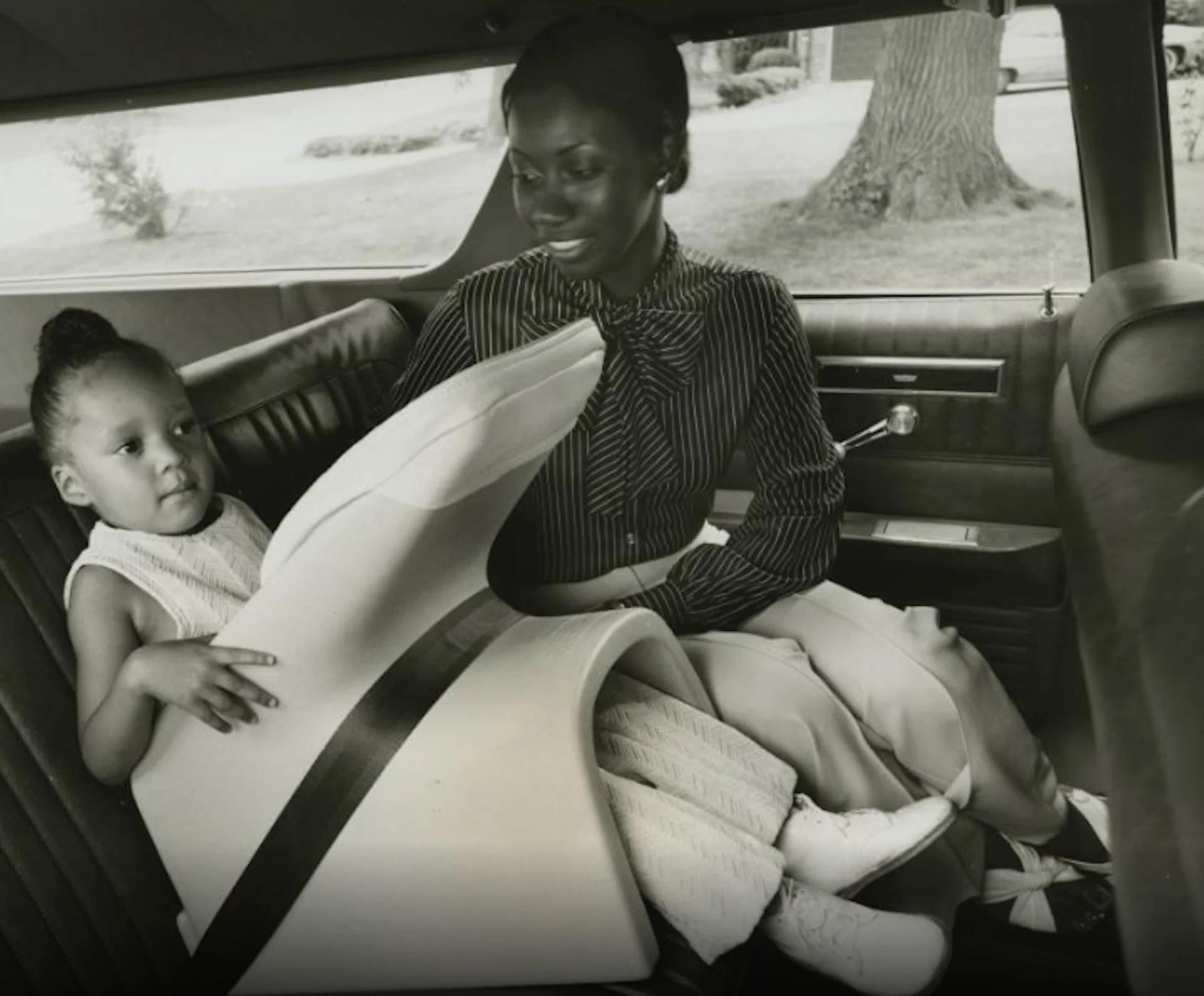
FORD MOTOR COMPANY'S TOT-GUARD, 1973
Photo courtesy of the Collections of The Henry Ford Museum
DM/How would you describe the response to the project so far?
Gabriella Nelson/For our five person internal team, we’ve all worked on so many aspects of the project: exhibitions at the Mütter Museum and Center for Architecture and Design, the book, various events, and Storybanking. It’s been a process and continues to be a really rewarding, introspective, and an even arduous journey—much like birth itself. To see this behemoth of a project come to life has been an incredible feeling. For our partners and the wider audience, the project has been welcomed with open arms. For some folks, it’s also been emotional. There is so much to relate to, so much to see yourself in. So many realities are covered in this project. Realities that are painful and joyful and often hidden. It can be an emotional experience to finally feel seen.
DM/How do you hope to see the project evolve over time?
MMF/The project has already had a really long evolution. We’ve been working on it since graduate school in many ways, and more formally since 2017. So we’d like it to evolve by being out in the world and in conversation with others who share our interests and concerns and are also doing amazing projects. More than anything, we want to see concrete policy change so that people doing the work are better resourced and better paid, so that pregnant and birthing people, especially people of color, are supported and given the resources that they need not just to survive but thrive. We want to be part of a larger conversation that has been fighting for these things for a very long time, because we think we’re at a tipping edge and every voice counts. ◆
To learn more about Designing Motherhood: Things That Make and Break Our Births, visit designingmotherhood.org. The latest exhibition at the Center for Architecture and Design in Philadelphia runs September 10-November 14th; the exhibition at the nearby Mütter Museum runs through May 2022.
